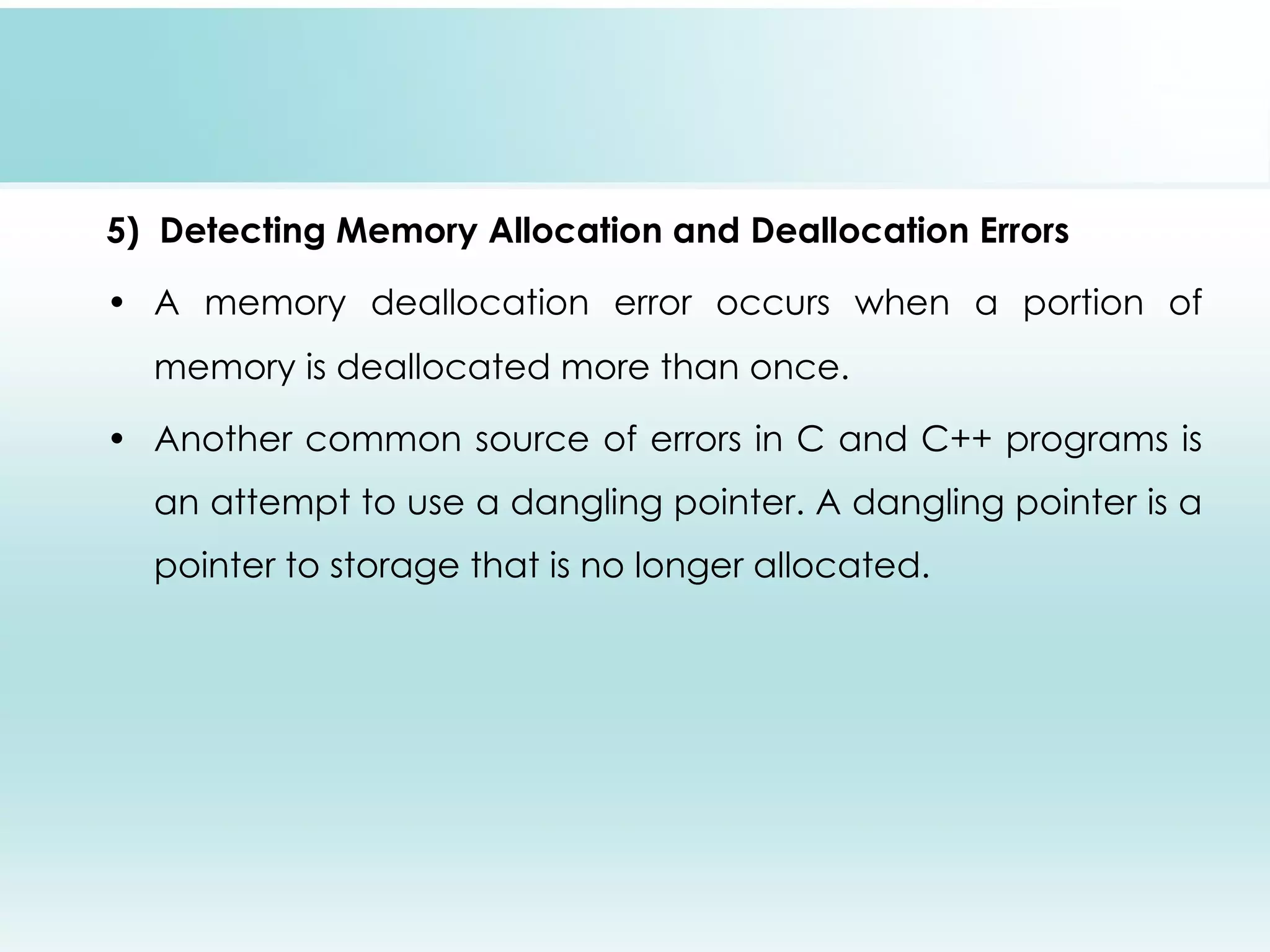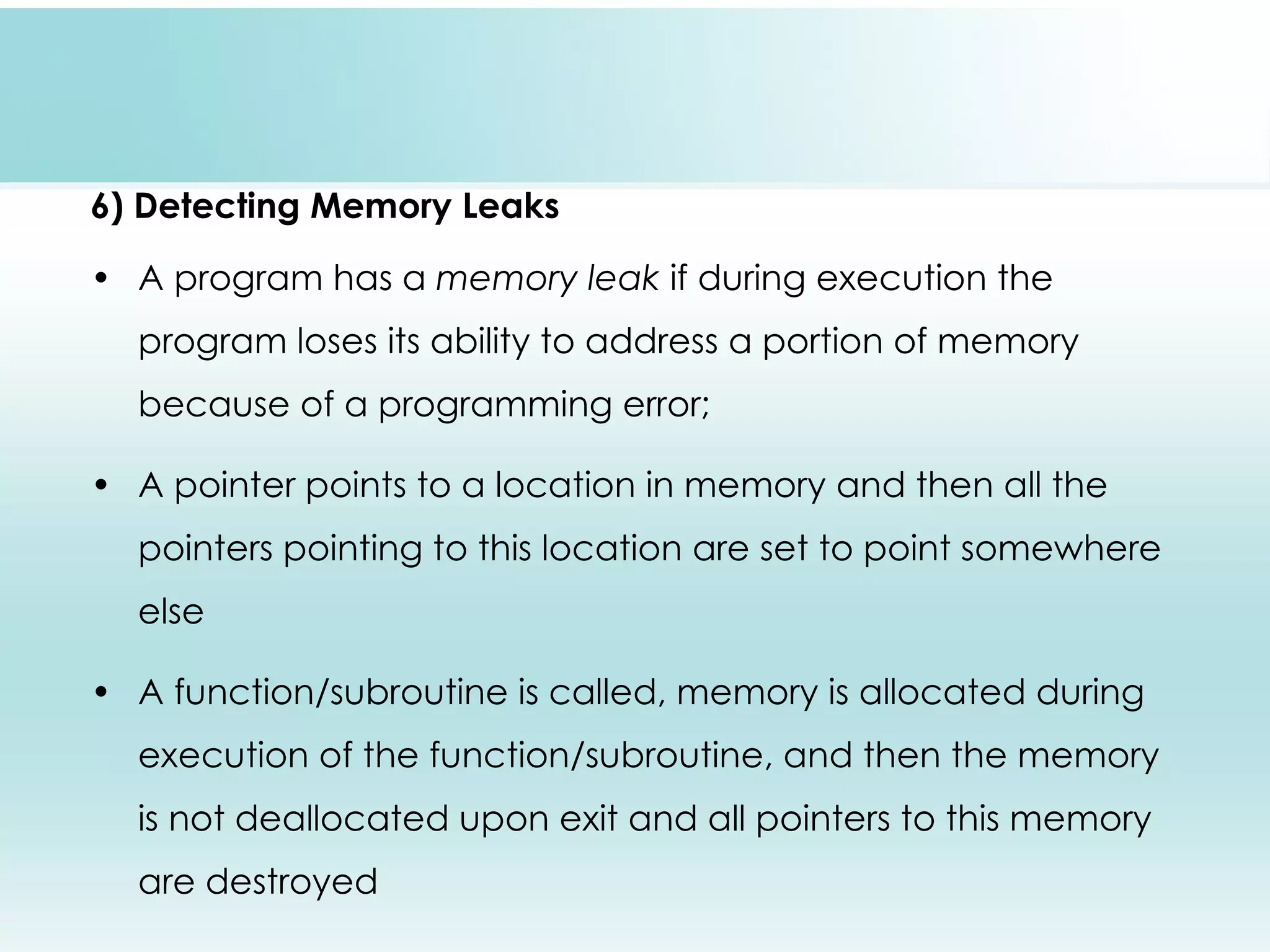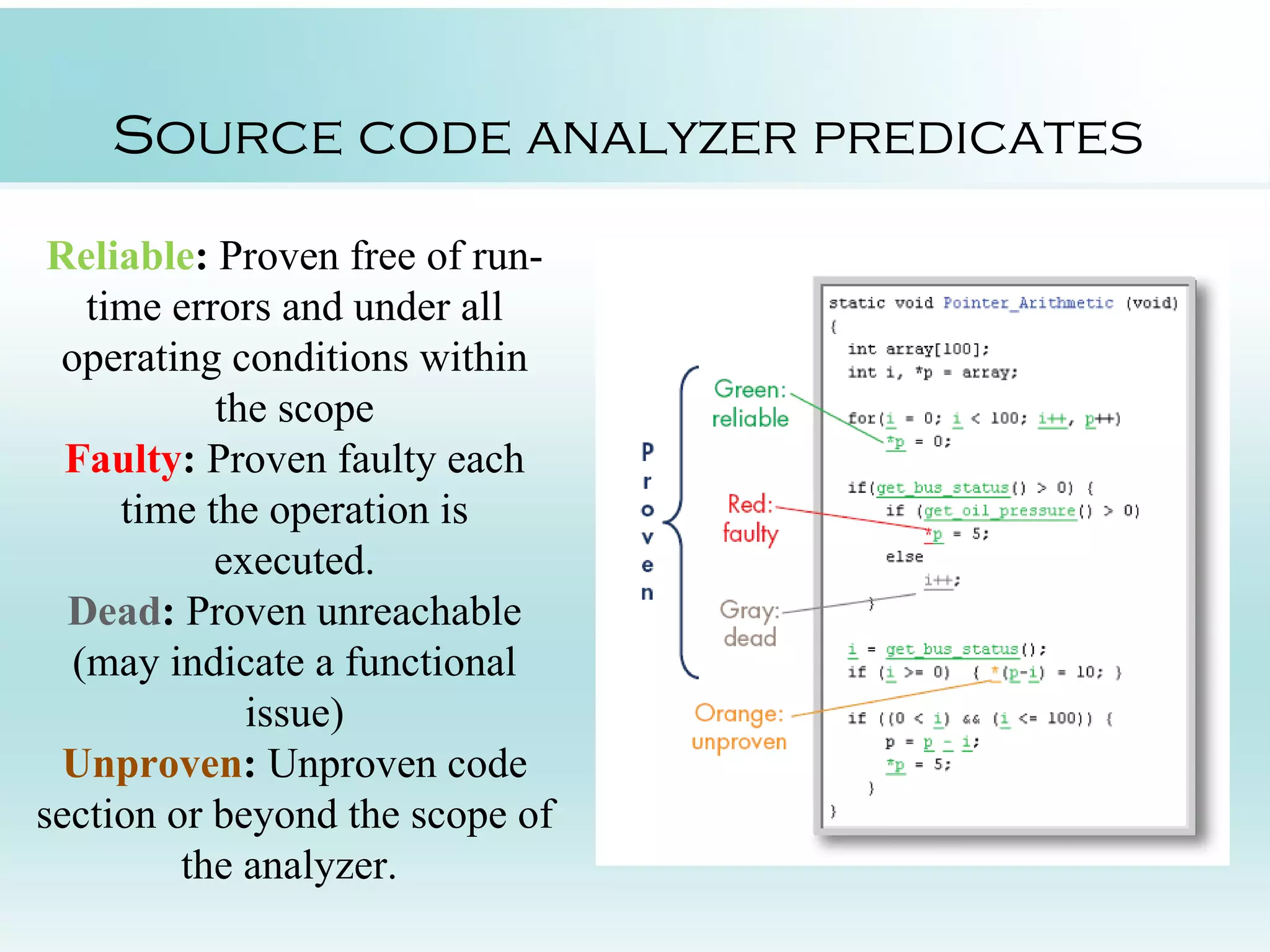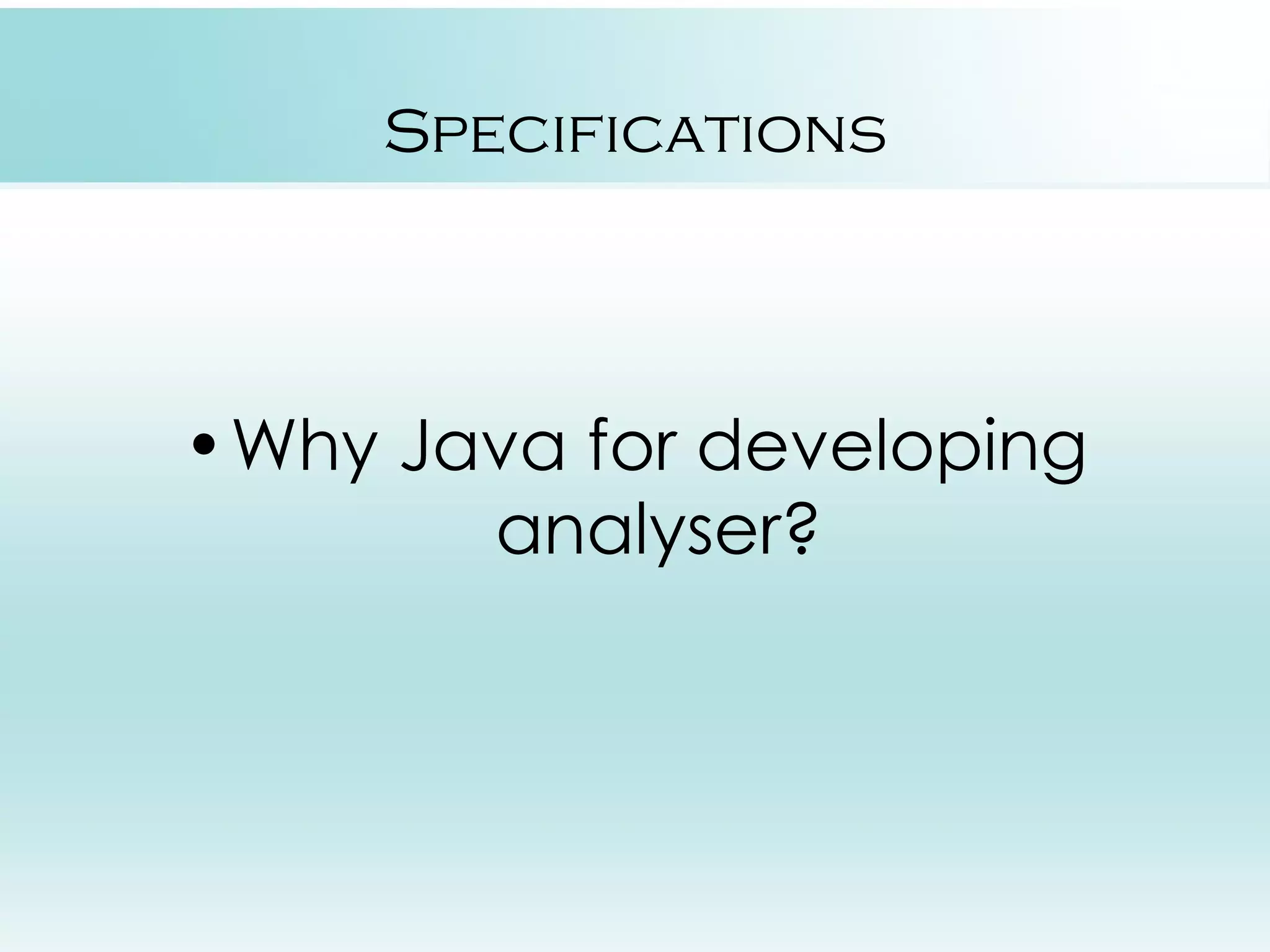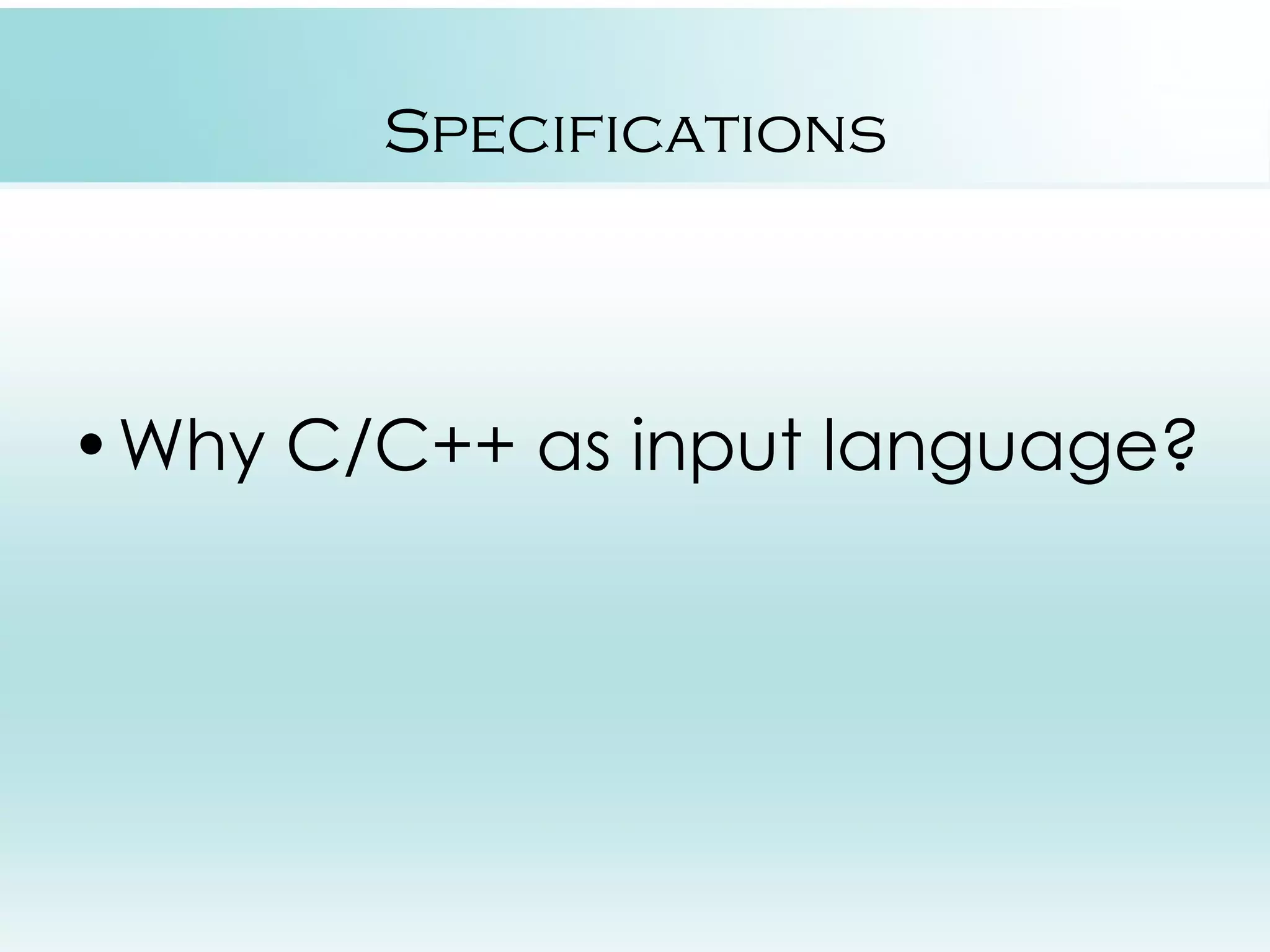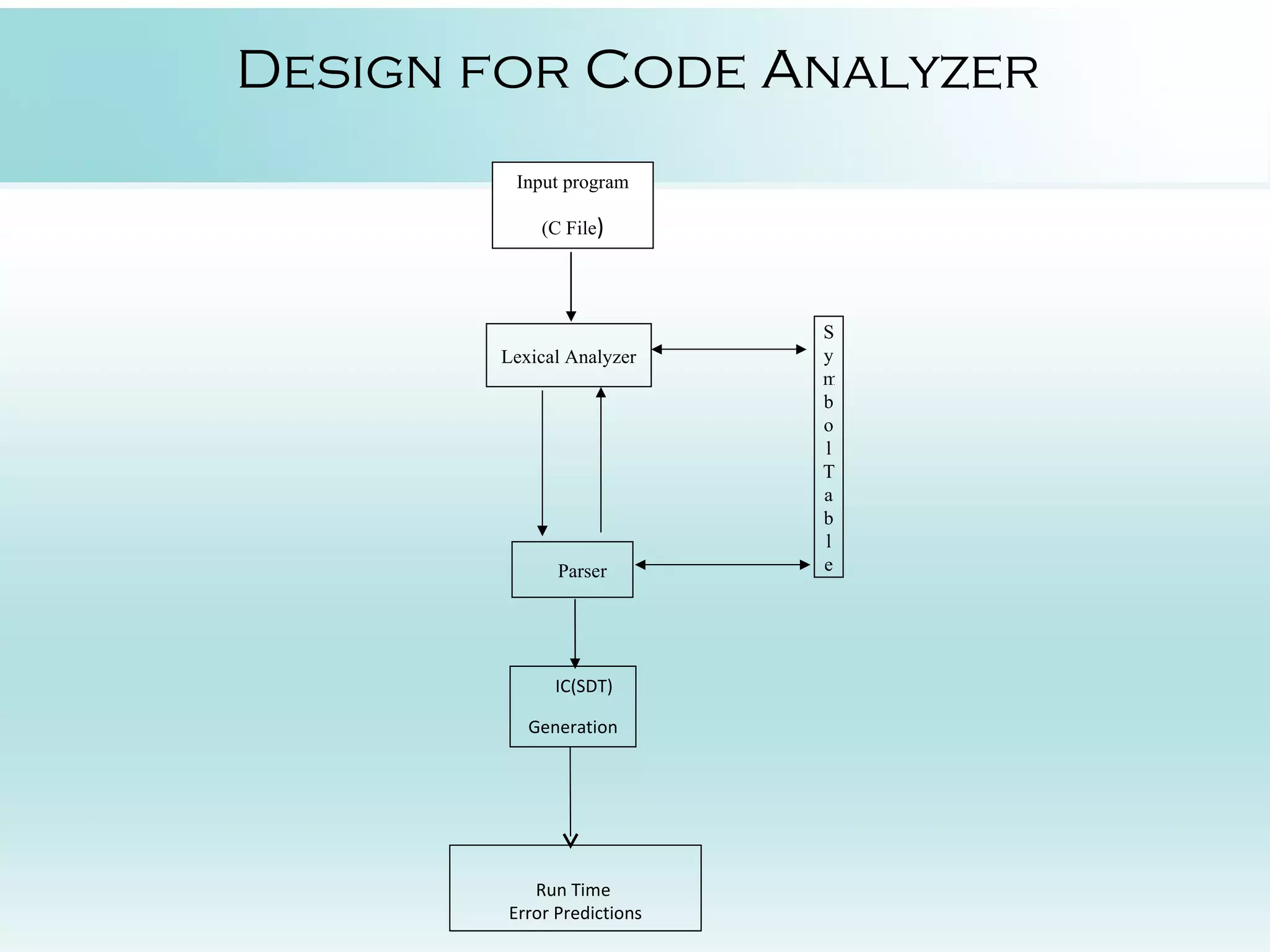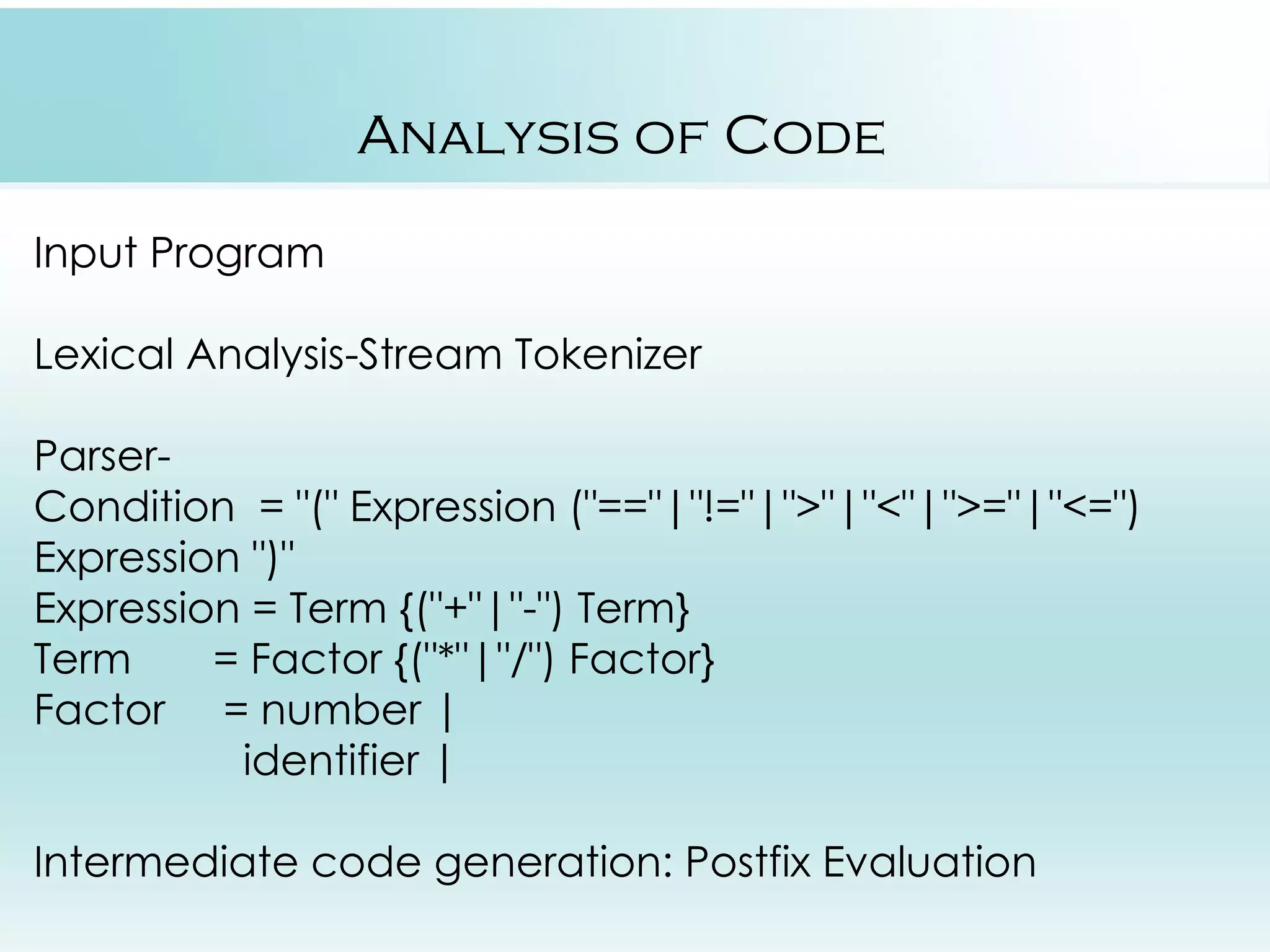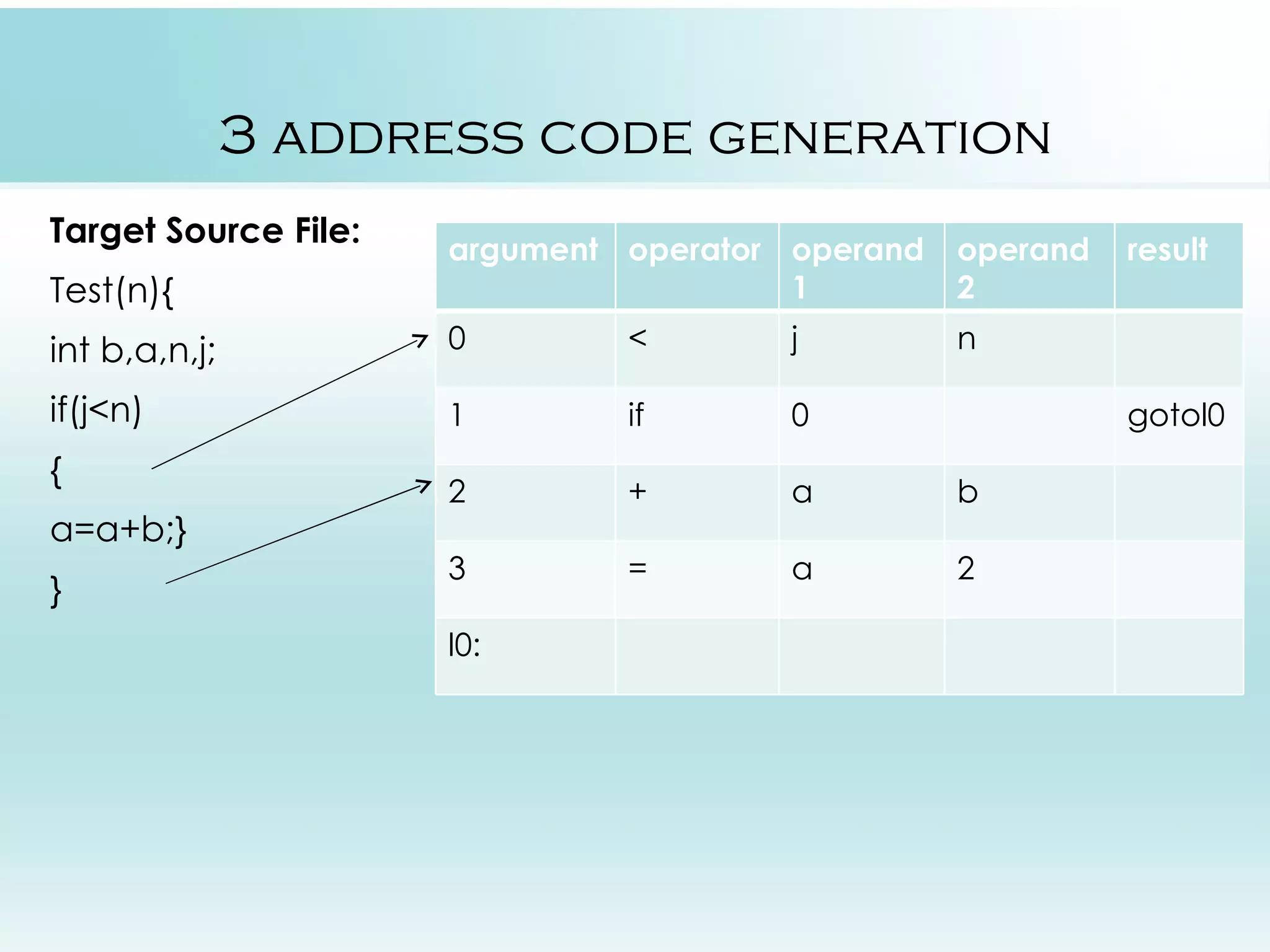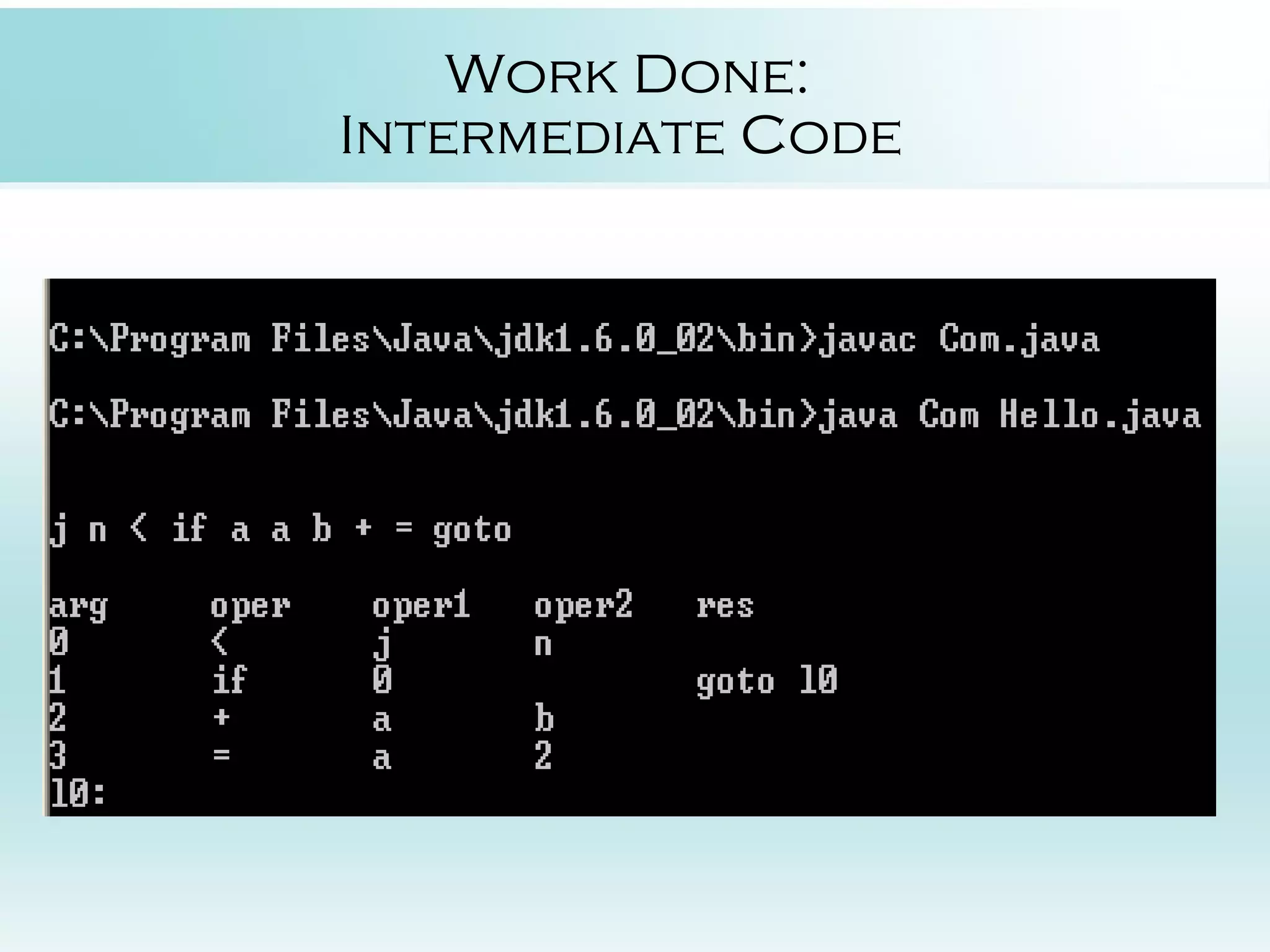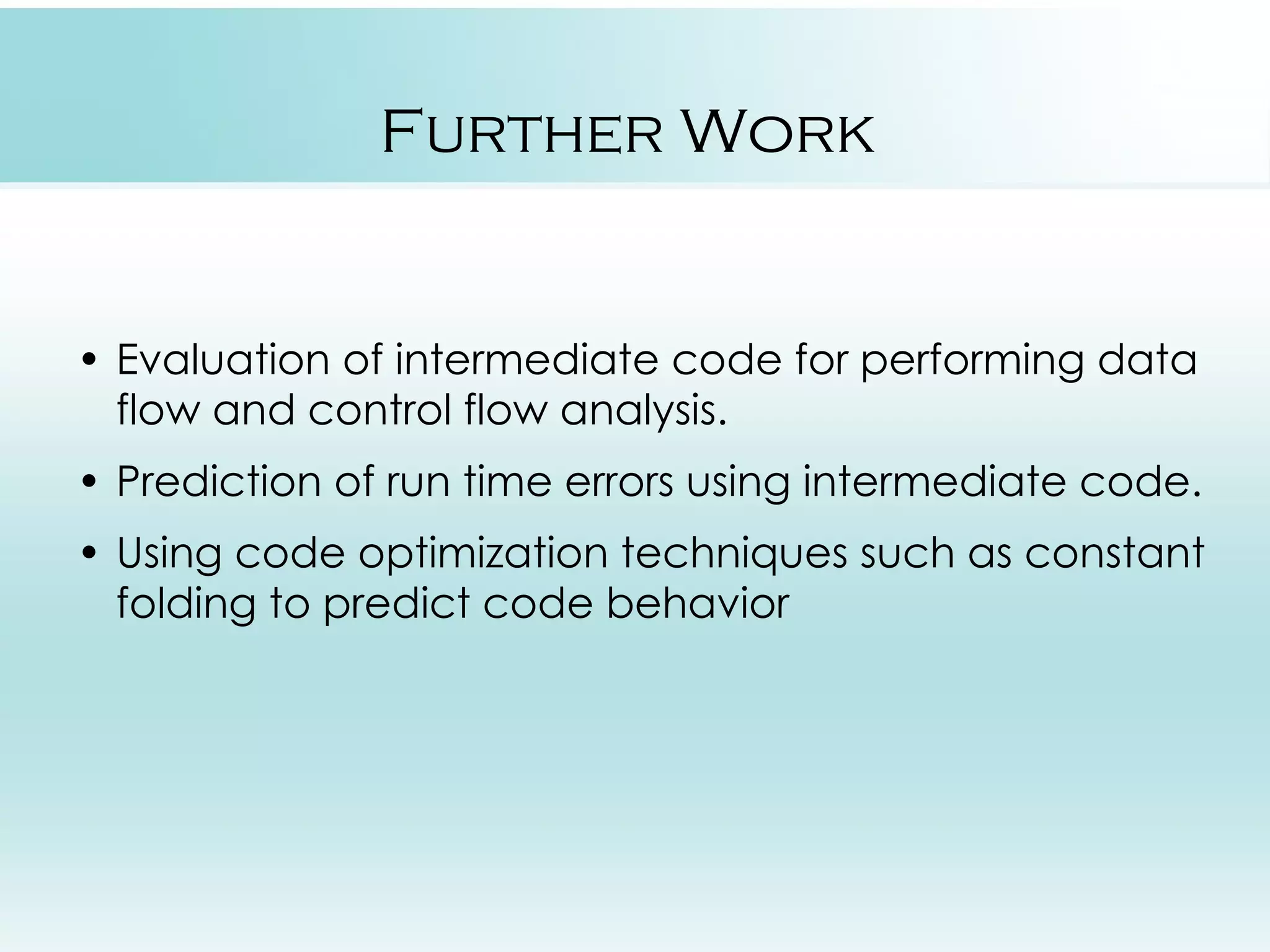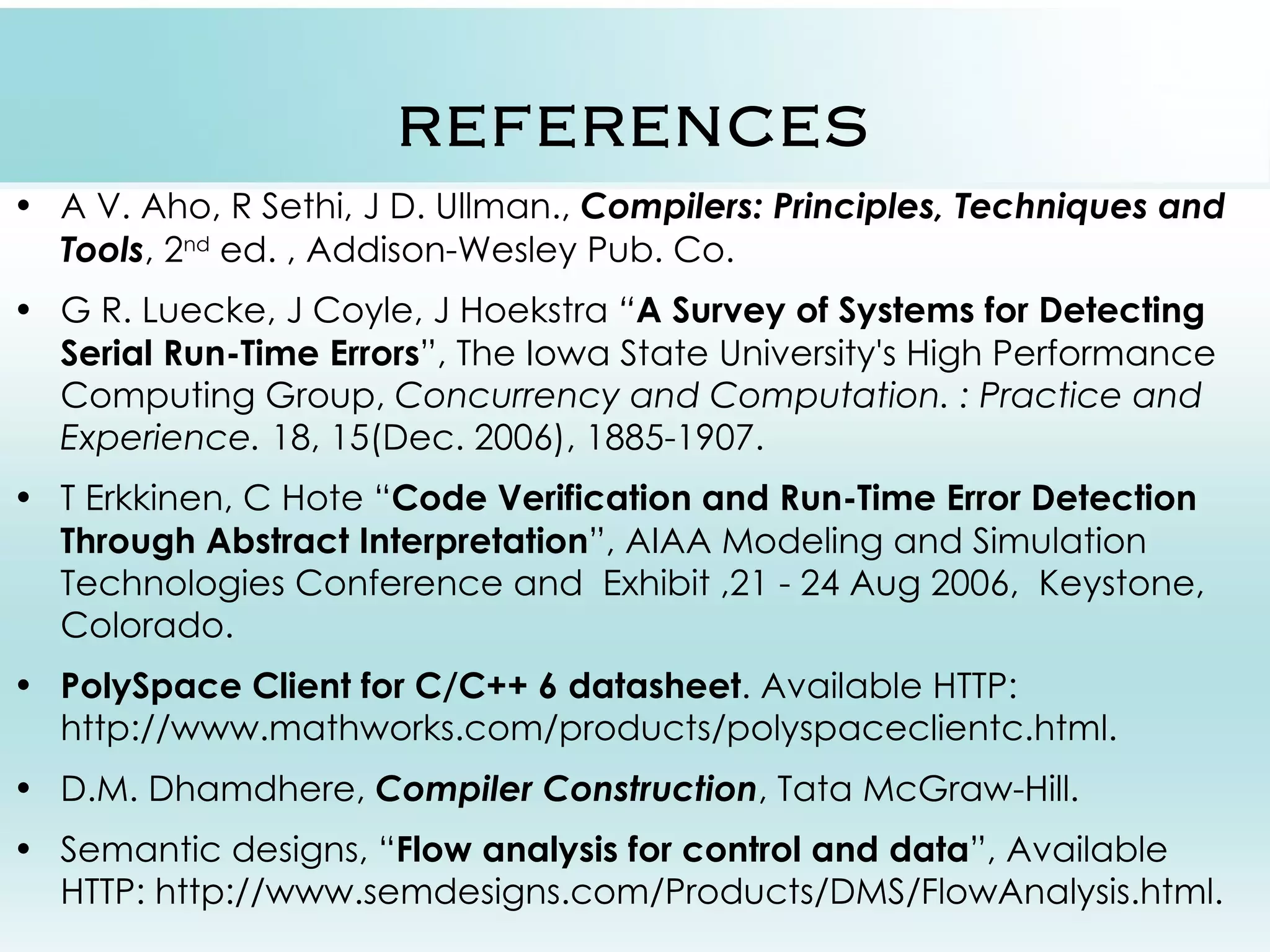This document discusses code analysis and techniques for predicting runtime errors in source code. It describes existing solutions like detecting uninitialized variables, overflows, divide by zeros, incorrect argument data types. It also discusses detecting out-of-bounds array and pointer references, memory allocation/deallocation errors, and memory leaks. The document outlines the design of a code analyzer that takes C code as input, performs lexical and syntax analysis to generate intermediate code, and then uses the intermediate code to predict possible runtime errors. Further work mentioned includes evaluating the intermediate code to perform data and control flow analysis for error prediction.
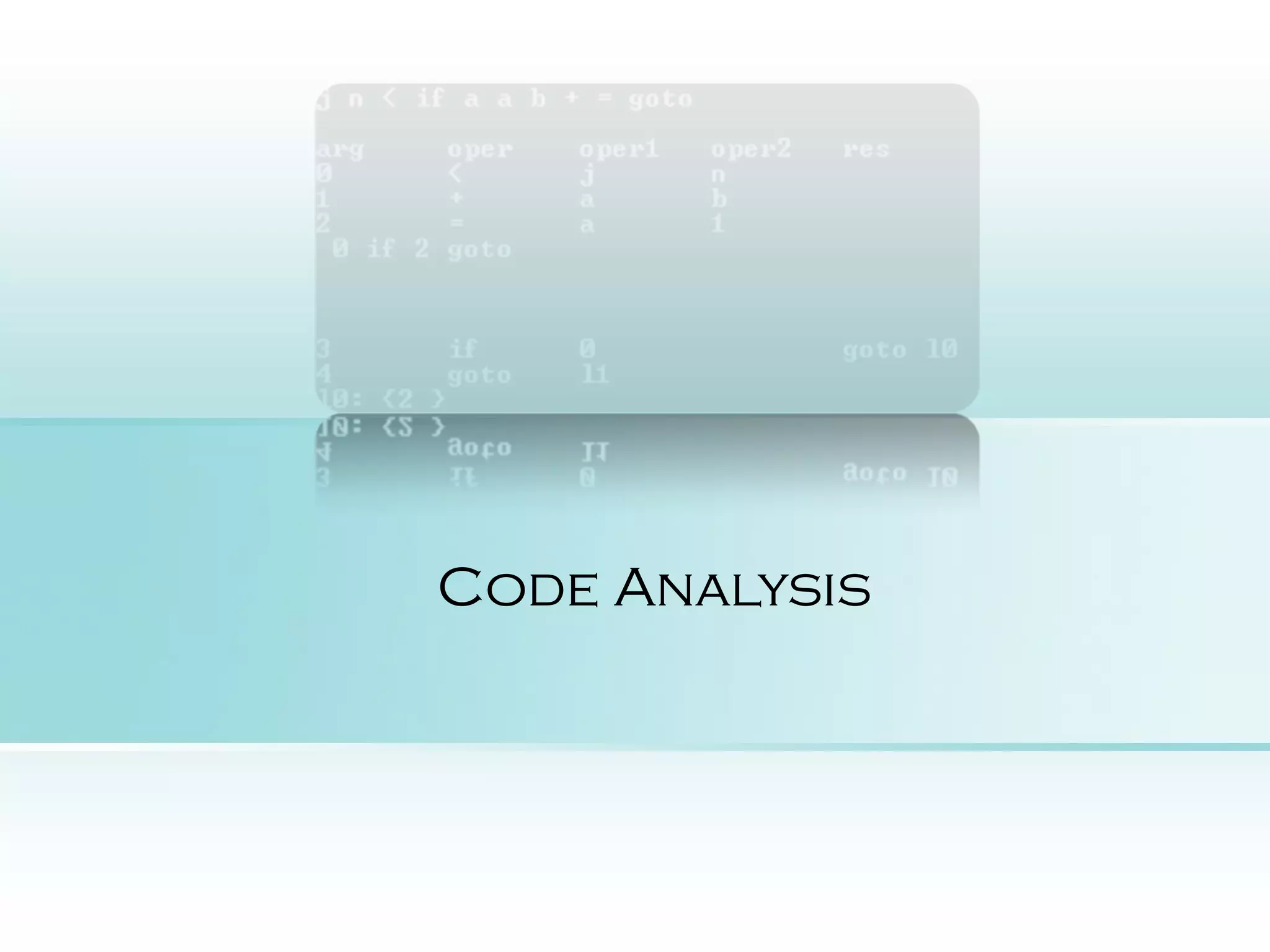
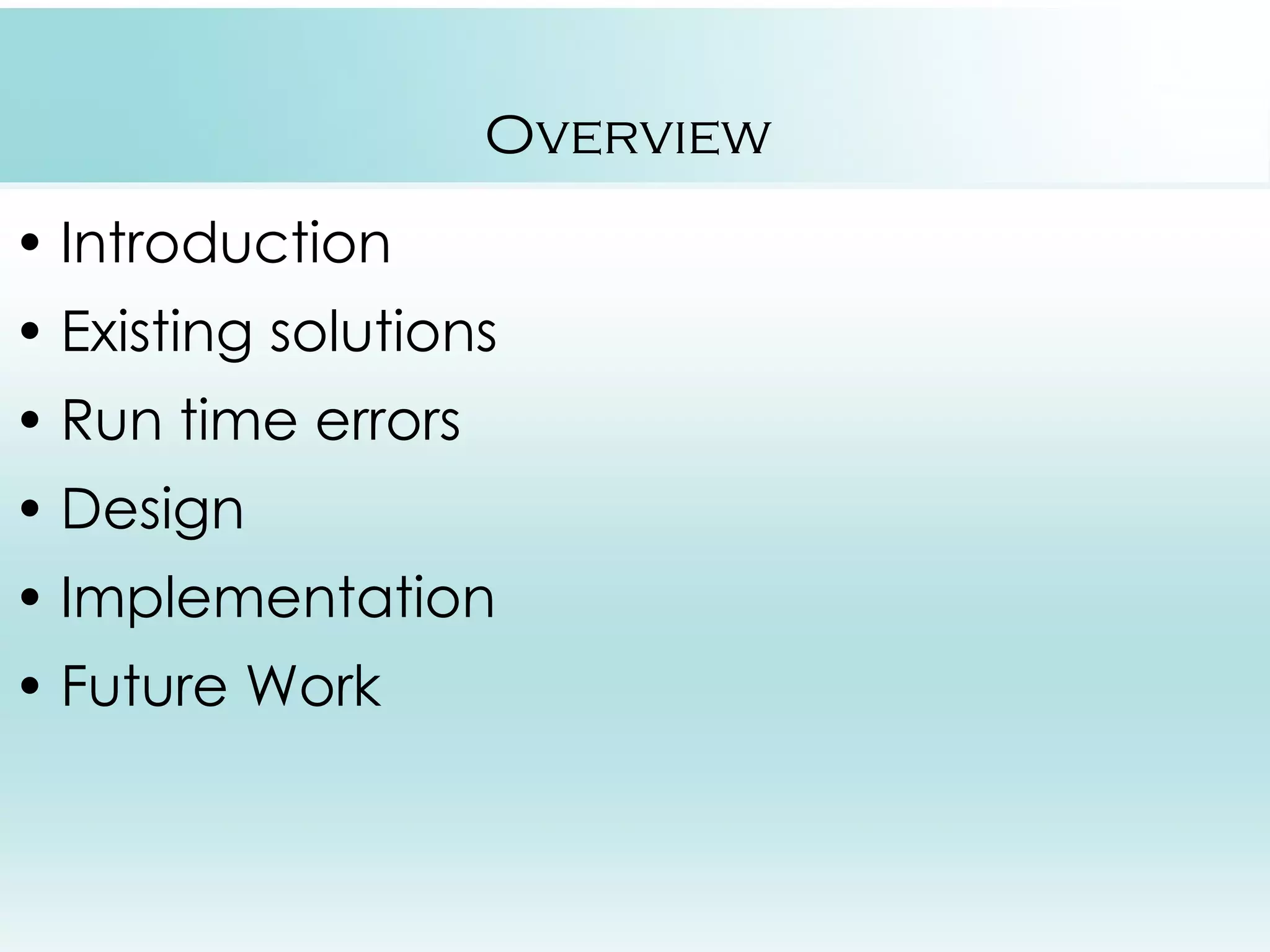
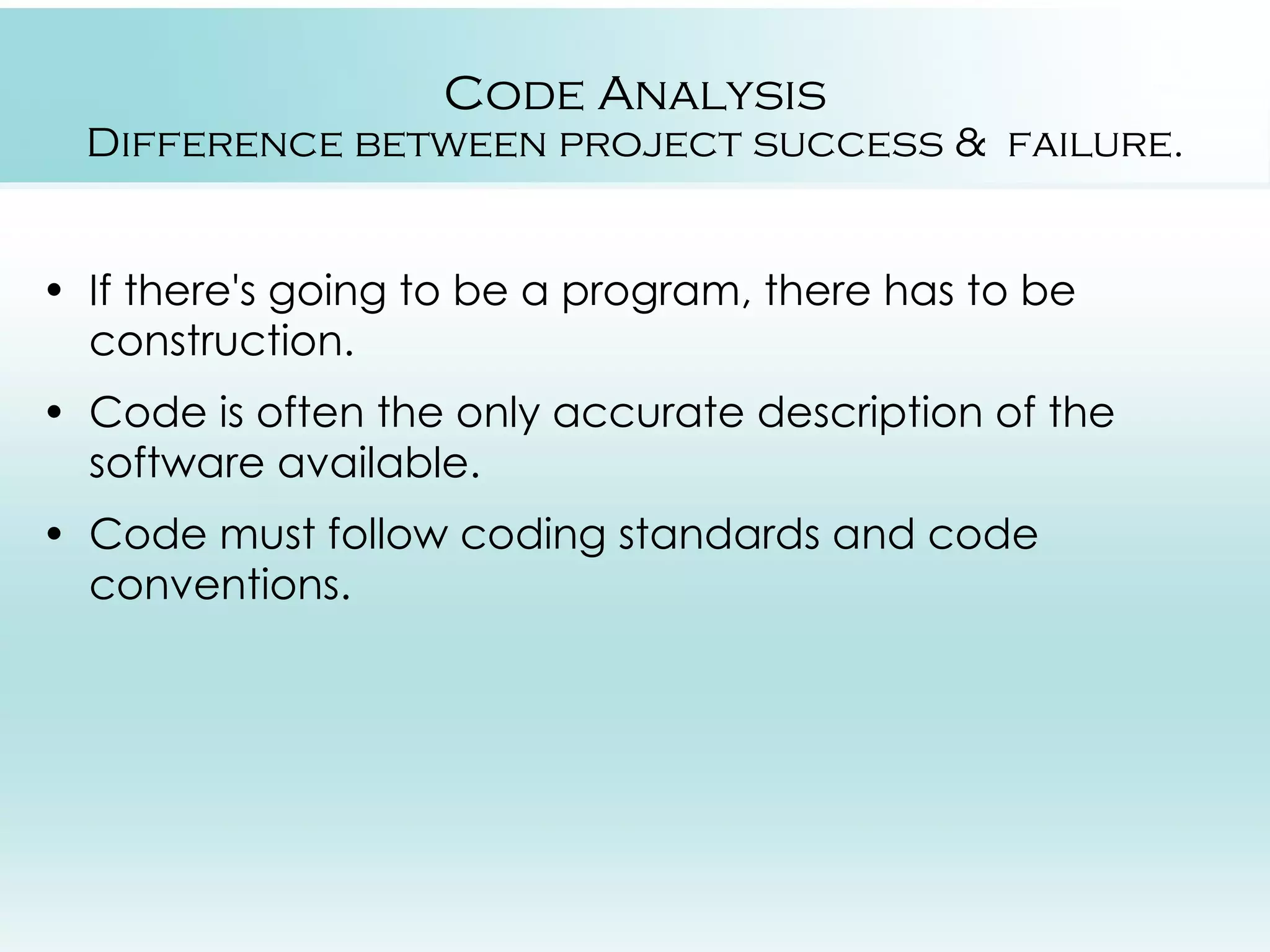
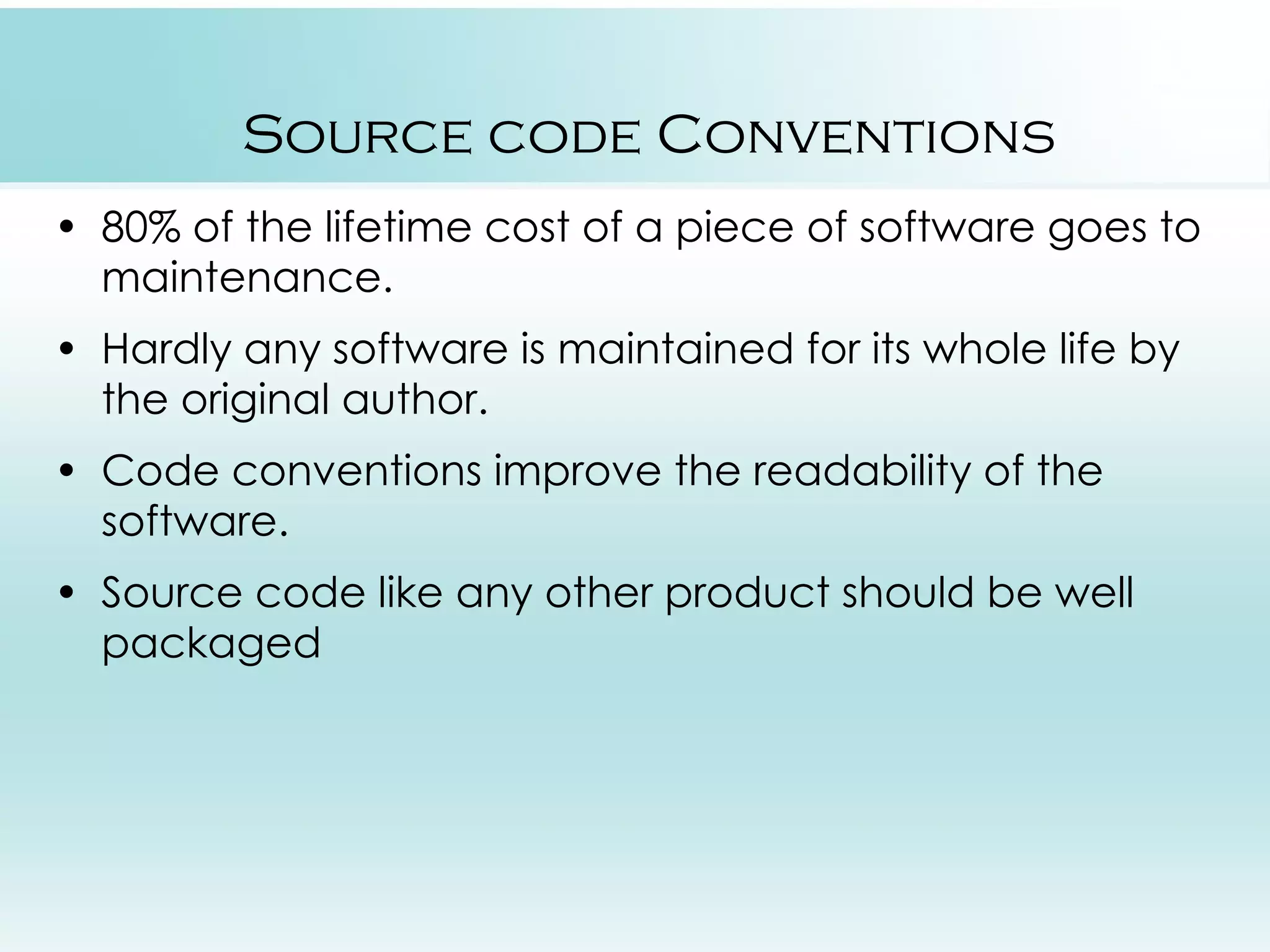
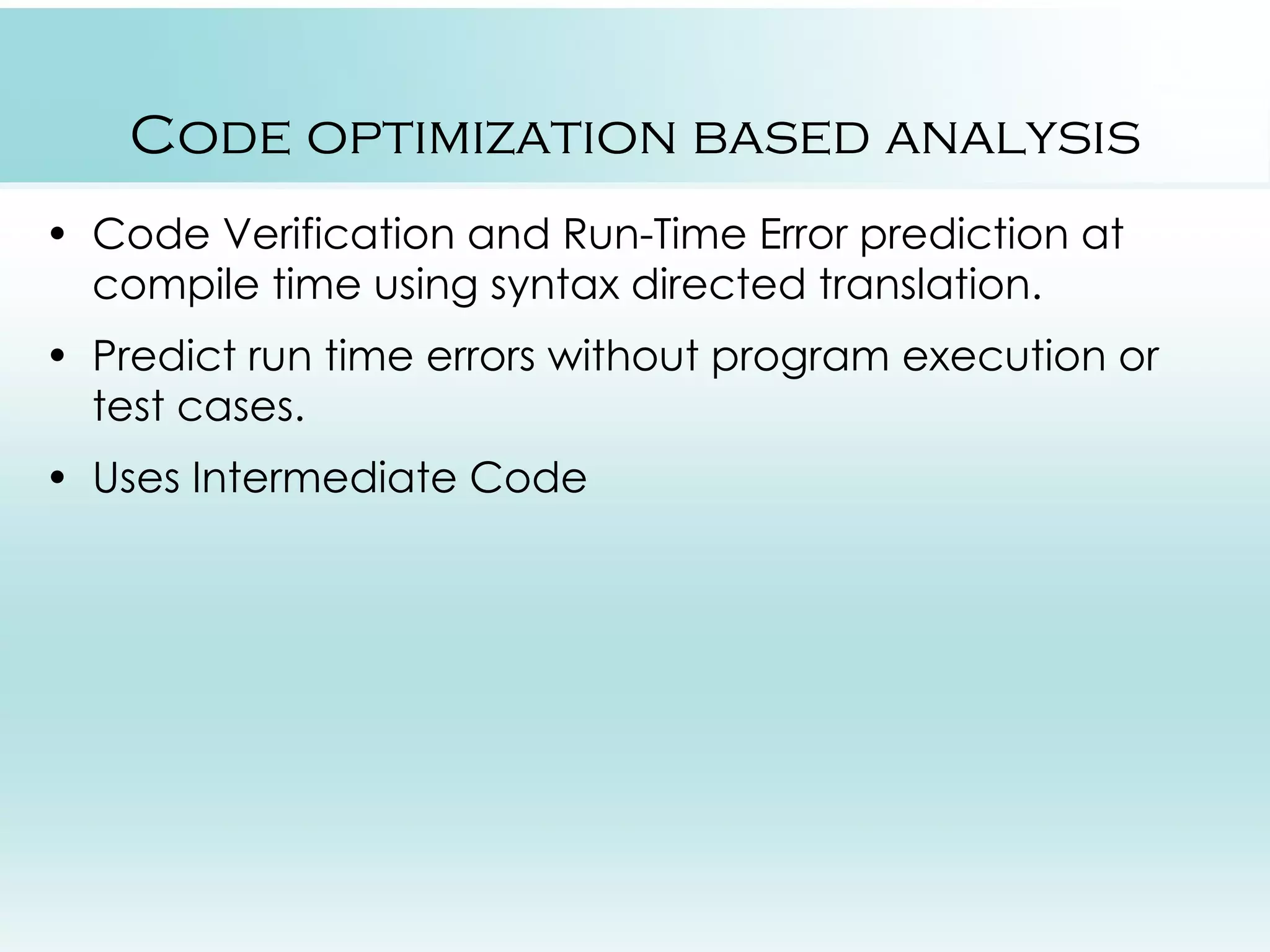
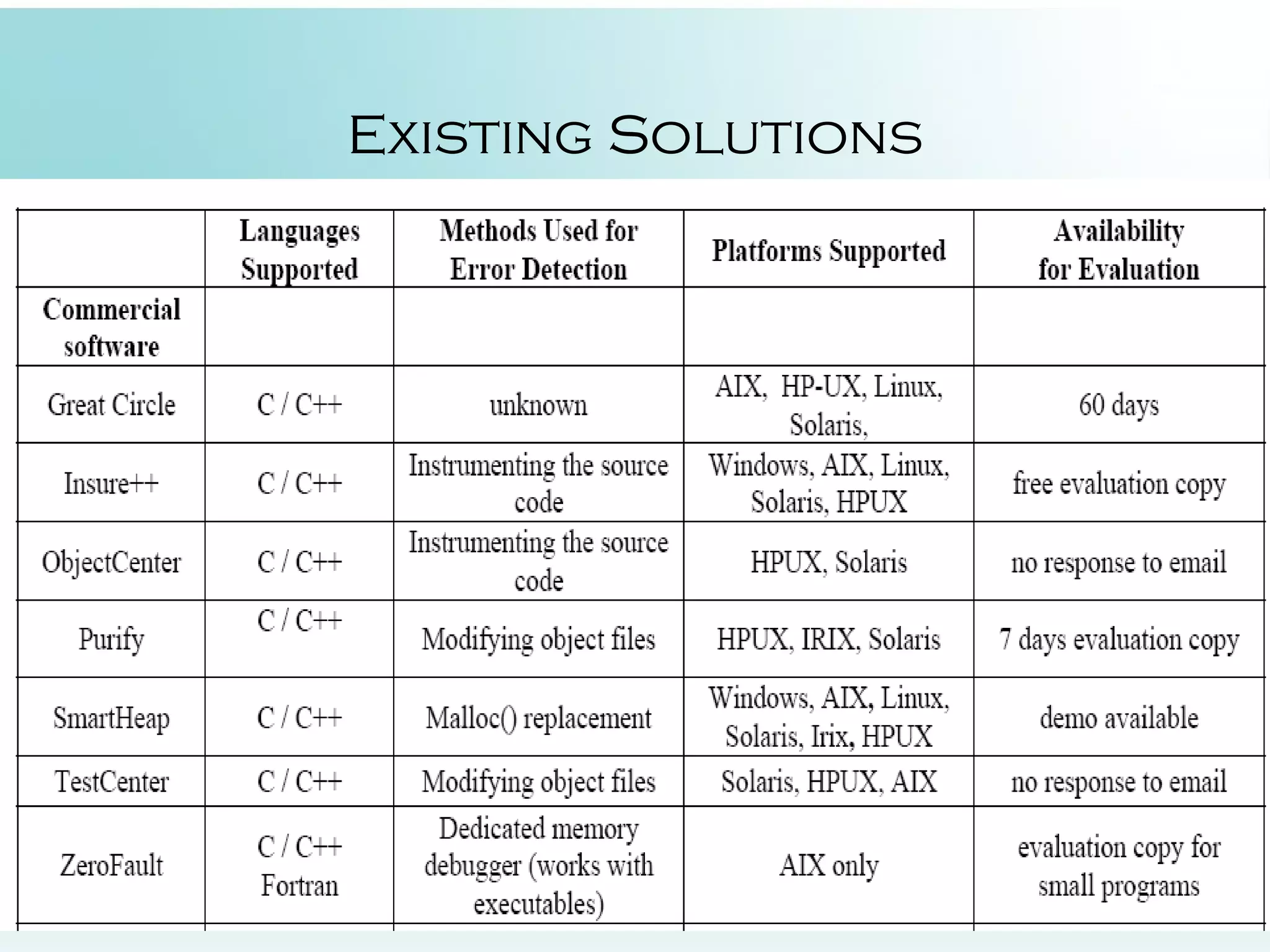
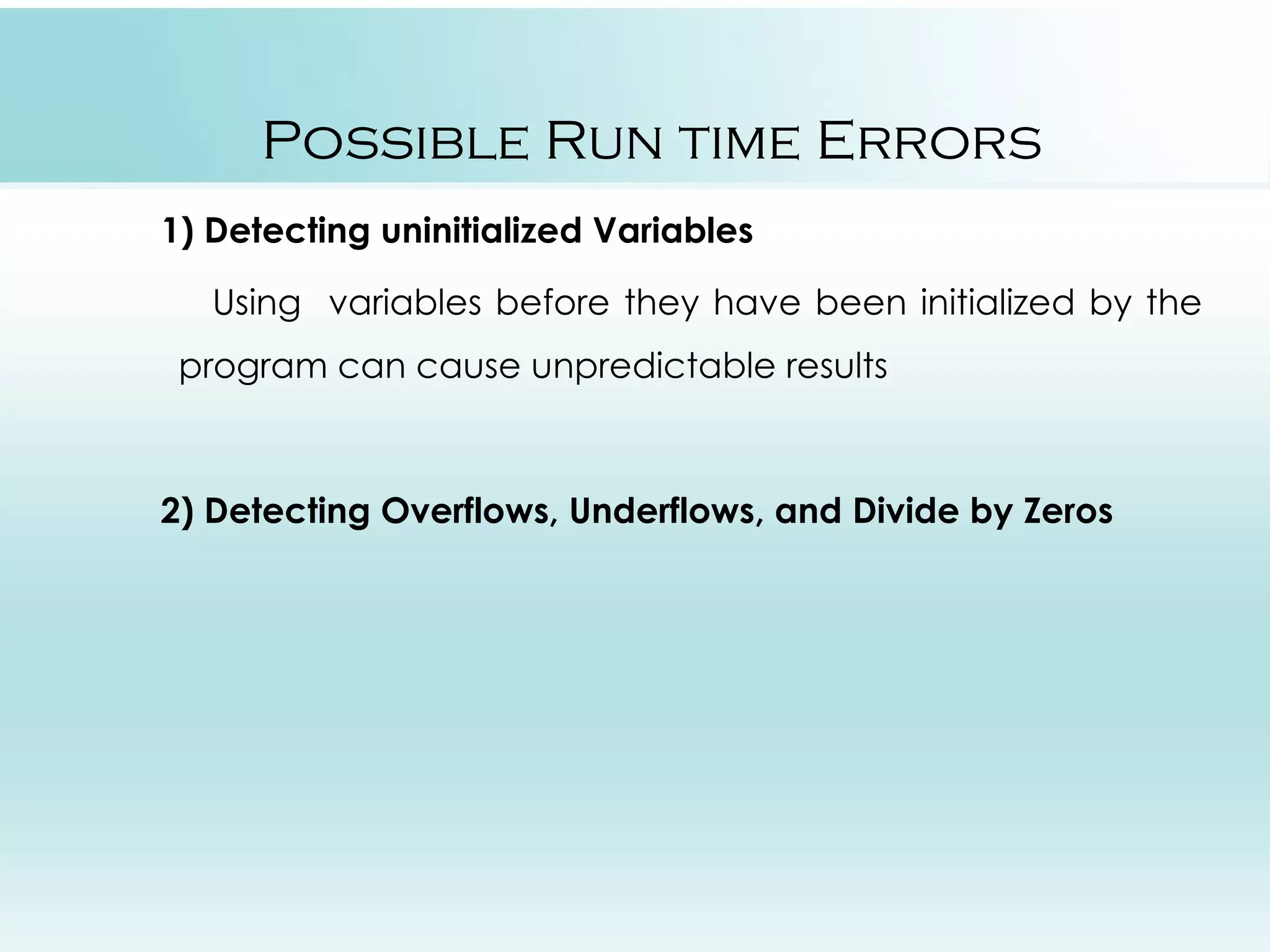
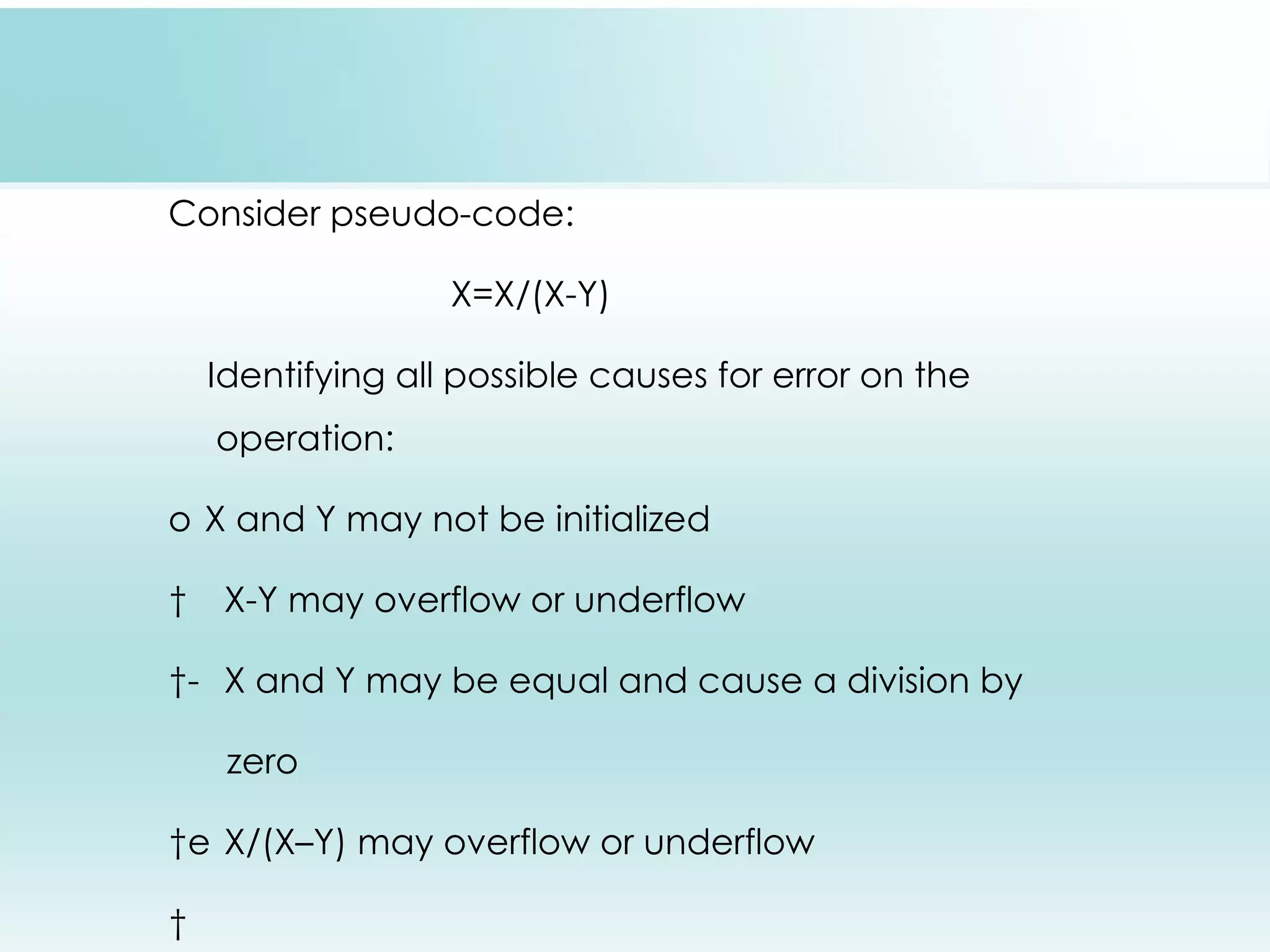
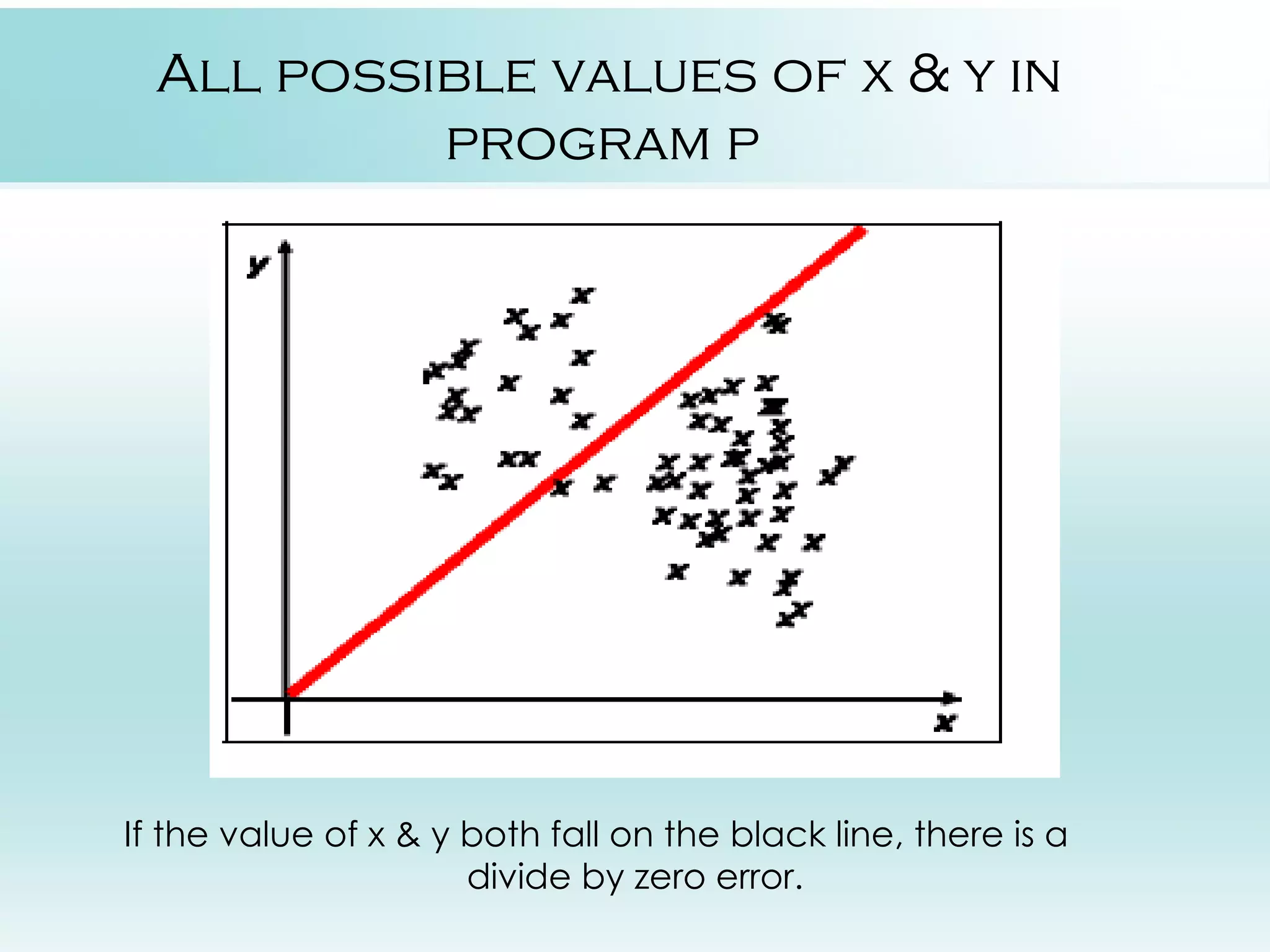
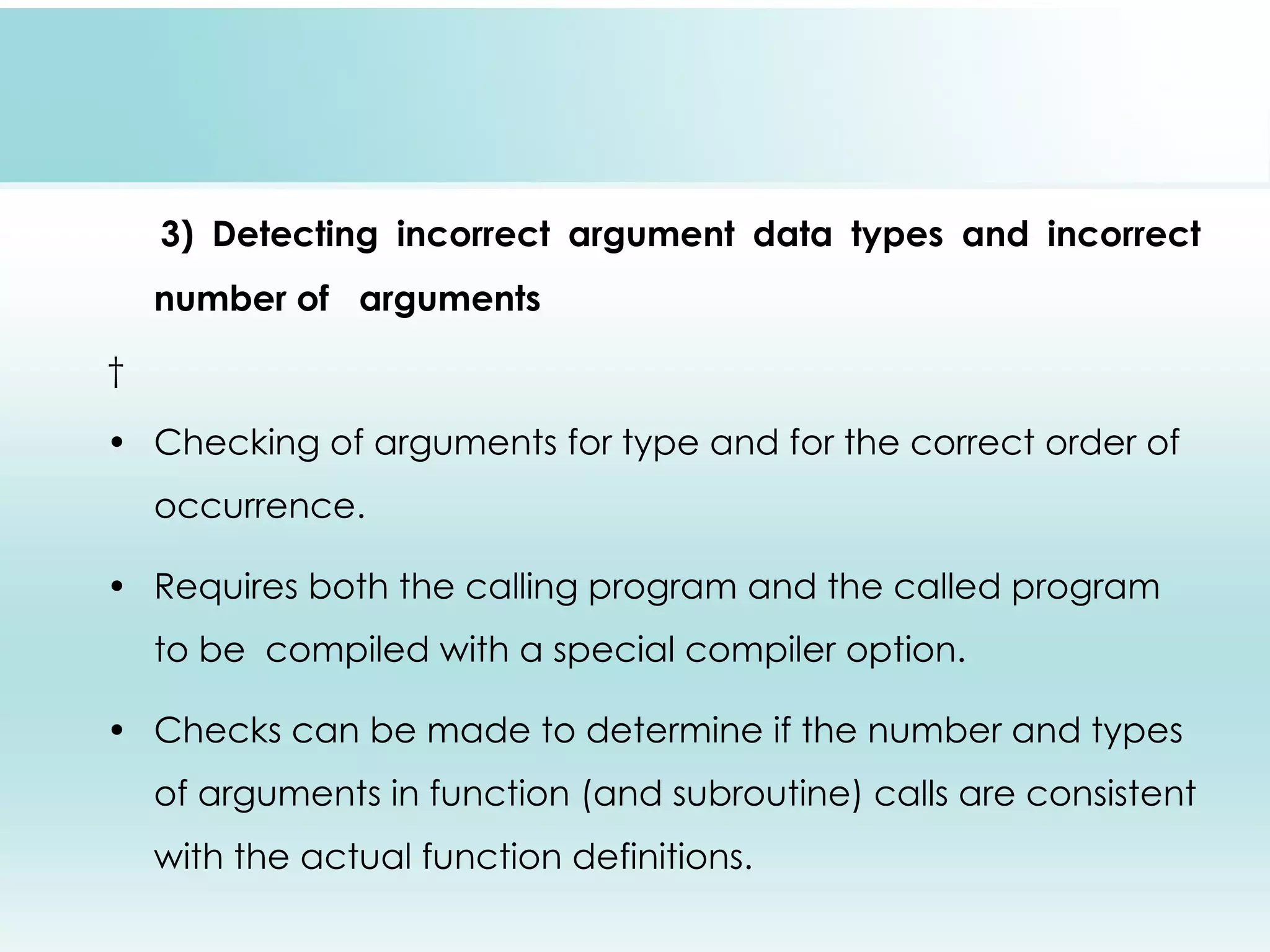
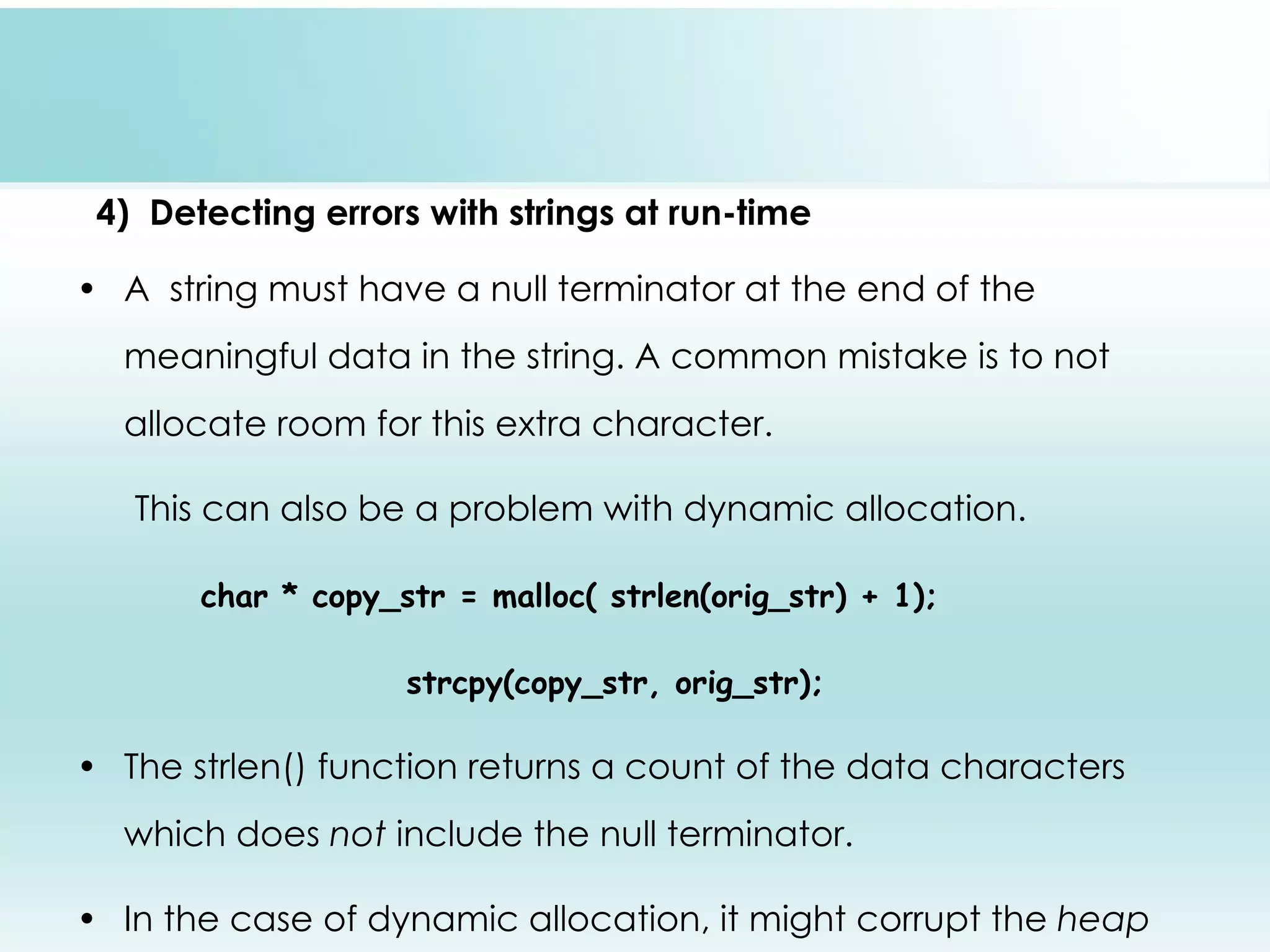
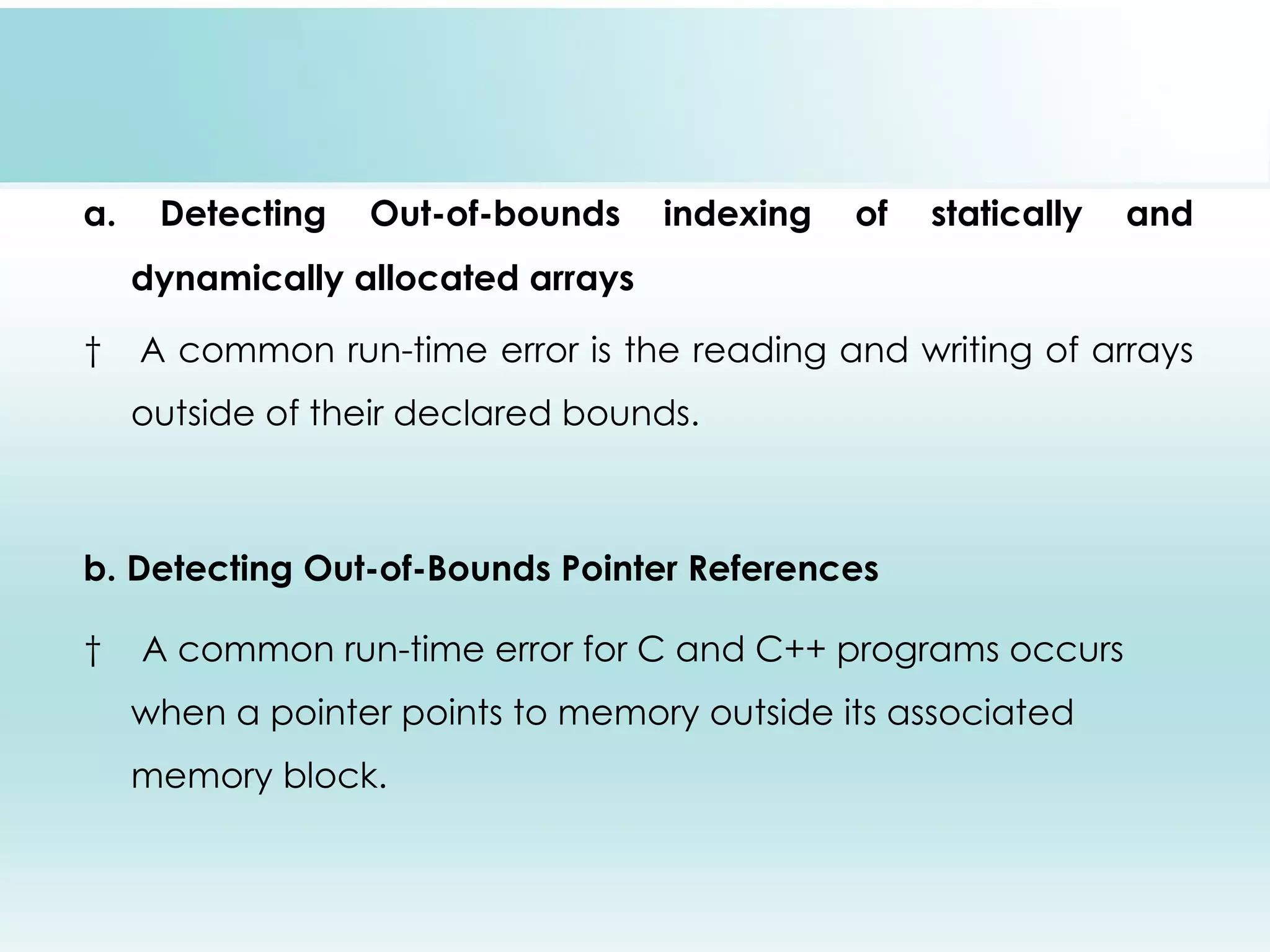
![Pseudo code for out of bound references for(i=0;i<5;i++) A[i]=i; p=A; for(i=0;i<=5;i++) p++; a=*p; /* out-of-bounds reading using pointers */](https://image.slidesharecdn.com/codeanalysisg32-090711052738-phpapp02/75/Code-Analysis-run-time-error-prediction-13-2048.jpg)
